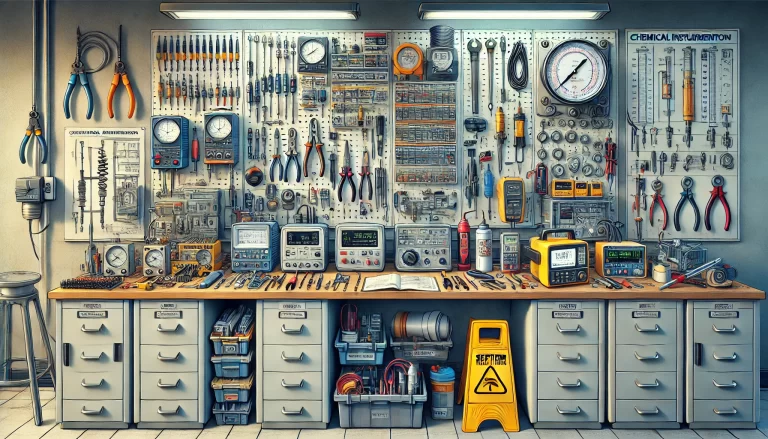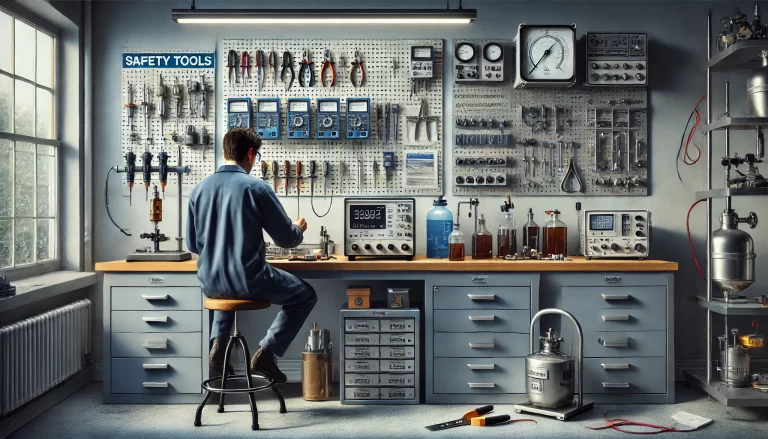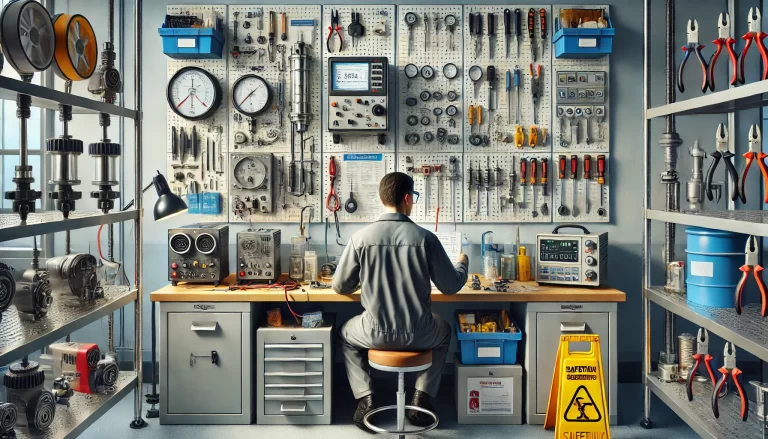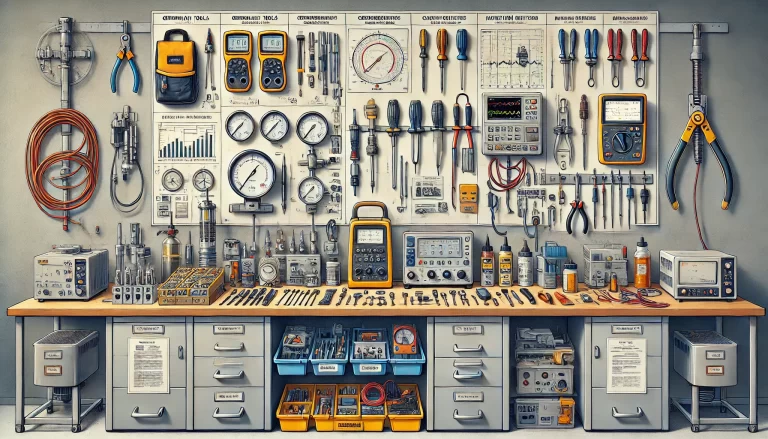Chemical instrumentation plays a crucial role in industrial automation, especially in chemical plants, where precise measurement and control are essential for safety and efficiency. The tools and equipment used for installation, calibration, maintenance, and repair of chemical instruments can be divided into general-purpose tools, specialized tools, measurement devices, and auxiliary equipment. This article details these categories to provide a comprehensive guide for professionals in the field.
1. General-Purpose Tools
General-purpose tools are versatile and essential for various tasks. These tools include:
Wrenches:
- Adjustable wrenches: Suitable for tightening or loosening nuts and bolts of different sizes.
- Combination wrenches: Offer both open-ended and ring spanner options.
- Allen wrenches: Commonly used for securing or removing hexagonal bolts in instrumentation panels.
Screwdrivers:
- Flathead and Phillips screwdrivers: Used for general-purpose fastening.
- Electric screwdrivers: Speed up the process for repetitive tasks.
Hammers:
- Rubber mallets: Used to adjust delicate parts without causing damage.
- Small steel hammers: For general construction tasks.
Pliers:
- Needle-nose pliers: Essential for accessing tight spaces in control panels.
- Wire strippers: Facilitate cable termination and ensure proper electrical contact.
Cutting Tools:
- Hacksaws: Used to cut instrument piping and conduit.
- Tube cutters: Provide precise cuts for instrument tubing.

2. Specialized Tools
Specialized tools are designed for specific tasks related to calibration and troubleshooting:
Pressure Calibration:
- Handheld Pressure Pumps: Used to generate test pressure for calibrating pressure gauges and transmitters.
- Standard Pressure Gauges: Provide reference readings during calibration.
Temperature Calibration:
- Dry-Block Calibrators: Simulate specific temperatures to test thermocouples and resistance temperature detectors (RTDs).
- Thermocouple Simulators: Generate temperature signals for testing.
Flow Calibration:
- Standard Flow Meters: Used to validate flowmeter accuracy.
- Ultrasonic Flow Calibrators: Non-invasive tools to measure flow rate in pipes.
Signal Testing:
- Signal Generators: Provide current (4-20mA) or voltage signals for testing controllers and transmitters.
- Loop Calibrators: Verify the integrity of current loops and ensure proper signal transmission.
Vibration Analysis:
- Portable Vibration Analyzers: Detect equipment imbalances or misalignments.
- Vibration Calibrators: Test accelerometers and vibration transmitters.
3. Measurement Tools
Precision measurement tools are indispensable for diagnosing and troubleshooting:
Multimeters:
- Measure voltage, current, resistance, and continuity.
- True RMS multimeters provide accurate readings for non-linear loads.
Clamp Meters:
- Non-invasive tools to measure current flowing through conductors.
Insulation Testers (Megohmmeters):
- Measure the insulation resistance of cables and electrical devices.
Earth Resistance Testers:
- Evaluate the quality of grounding systems.
Infrared Thermometers:
- Allow non-contact temperature measurement for surface diagnostics.

4. Tools for Instrumentation-Specific Tasks
These tools address the unique requirements of instrument maintenance:
Calibration Tools:
- Hart Communicators: Interface with smart transmitters for configuration and diagnostics.
- Multifunction Calibrators: Perform multiple calibration tasks (e.g., temperature, pressure, and signal testing).
Assembly Tools:
- Pipe Bending Tools: Create precise bends in instrument tubing.
- Tubing Clamps and Supports: Secure instrument piping in place.
Cleaning Tools:
- Brushes, isopropyl alcohol, and compressed air are commonly used to remove dirt or corrosion from instruments.
- Anti-static cleaning cloths ensure that sensitive components remain static-free.
5. Auxiliary Tools
These tools assist with instrument installation and maintenance:
Welding and Soldering Tools:
- Portable soldering irons: Used for cable connections in instrumentation panels.
- Hot-air guns: Assist in heat-shrink tubing applications.
Pipe Tools:
- Tube expanders and flaring tools: Prepare tubing ends for connections.
- Pipe threading machines: Ensure compatibility with threaded fittings.
Labeling Tools:
- Label printers: Create durable labels for wires and instruments.
- Engraving tools: Permanently mark equipment.

6. Safety and Protective Equipment
Safety is paramount when working in hazardous environments. Essential safety gear includes:
Personal Protective Equipment (PPE):
- Insulated gloves and boots for electrical safety.
- Goggles and face shields for eye protection.
Static Protection:
- Anti-static wrist straps and mats for handling sensitive electronics.
Explosion-Proof Tools:
- Non-sparking tools made of brass or aluminum for use in explosive atmospheres.
- Explosion-proof flashlights and enclosures for hazardous areas.

Conclusion
The efficient and safe operation of chemical instrumentation relies heavily on the proper selection and use of tools and equipment. A well-equipped instrumentation professional not only ensures accuracy in measurements and calibrations but also maintains the reliability of the control system. Investing in high-quality tools and regularly updating equipment to meet evolving technological demands is essential for achieving operational excellence.
